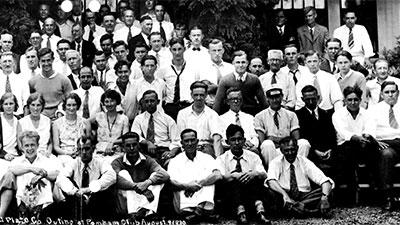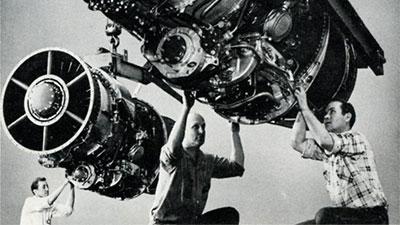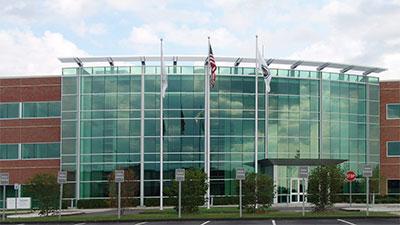Brand Introduction
Sensing is what we do.
In fact, our name Sensata comes from the Latin word sensate or ‘those gifted with sense’. Our focus on sensing is also reflected in our logo, which spells Sensata in Braille.
Sensata Technologies is a world leader and early innovator in mission-critical sensors and controls designed to make the world cleaner, safer and more efficient. Mission-critical means products that are essential and difficult to do. You’ll find our 47,000 unique products in many applications – anywhere from automotive braking systems to aircraft flight controls.
Sensata devices are in systems that protect people and the environment, so what we do matters. We take pride in knowing our technologies improve safety, efficiency and comfort for millions of people every day.
1.1 billion
units shipped per year under the Sensata brand and 14 other name brands
11
countries in which business and operations sites are located
$3.5 billion
of revenue generated during the 2018 fiscal year
History

1910s: The Golden Years
Sensata Technologies began as General Plate Company, a business founded on April 24, 1916 by Rathbun Willard to provide "gold plate" for the nearby Rhode Island jewelry industry. The start–up was financed with a $50,000 loan from the principals of the Grinnell Company in Providence.

1920s: Expansion
Manufacturing first took place in the cellar of the Bigney Building in Attleboro, MA. Constrained by space, Willard decided to move the company and purchased over 200 acres of land in what was then known as Cat-O-Nine-Tail Swamp. The first building was constructed at 34 Forest Street in 1926.

1930s: The First Merger
In 1931, the company merged with Spencer Thermostat Company of Cambridge, MA and formed metals & Controls Corporation. This merger combined the capabilities of metal processing with temperature-sensing control expertise that later attracted the attention of Texas Instruments.

1940s: Military Support
In 1941, metals & Controls Corporation designed and built its first circuit breakers for military vehicles and aircraft. There are now over one billion Sensata circuit breakers still in use today.

1950s: The TI Merger
The business began expanding its operations internationally in 1955 when it opened a sales office and small manufacturing plant in Holland. Throughout the 1950s, additional plants were established in several other international locations. In 1959 Texas Instruments merged with the former metals & Controls Corporation.

1960s: Moon Mission
In 1963, Texas Instruments renamed the division Materials & Controls. In 1965, engineers began designing and building all panel control switches for the lunar and Apollo 11 command modules as well as the lunar rover. The copper clad and aluminum wire bonding process was also developed for automotive battery cables.

1970s: Global Expansion
The company continued to grow and began manufacturing in Malaysia and Japan. The business also created its first positive thermal coefficient (PTC) electrical choke for cars in 1972 which was implemented in the Chevrolet Chevette in 1979.

1980s: Expertise Proves its Value
Aguascalientes, Mexico was chosen as the site for the company’s first expansion into Mexico in 1983. In 1985, the electrochemical and corrosion laboratory determined the cause of the deterioration of the Statue of Liberty’s copper exterior.

1990s: Materials Evolve
In 1990, the company created its first battery protector and low-g accelerometer. Material development continued with the launch of DuraFoil. Tag-it smart label technology was announced in 1997 and began production in 1999.

2000s: New Name, Same Promise
In 2006, the company, now Sensata Technologies, was reborn as a private company and acquired First Technology. In 2007, the company acquired Airpax Holdings and its four operating units.

2010s: 100 Years of Safety and Efficiency
In 2010, the company held its initial public offering (IPO) and began trading on NYSE under ST. In 2016, Sensata celebrated its centennial anniversary, marking 100 years of improving safety, efficiency and comfort for millions of people. The Sensata Technologies Foundation, a nonprofit 501(c)3 organization was founded in 2017.
Future Focus
We are ready for the next century.
Our vision is to be a world leader in mission-critical sensing and electrical protection while satisfying the world’s growing need for safety, efficiency and a clean environment and being a partner, employer and neighbor of choice.
Our sensors are the fundamental building blocks needed for a smart, connected, electrified and, ultimately, autonomous world.
There are four major trends that will shape our markets over the next decade.

Clean & Efficient
Sensata sensors are being used to make more efficient industrial pumps, improve fuel efficiency in cars and heavy off-road vehicles and more.

Electrification
As electric vehicles rise in popularity and demand, they require sensors to monitor and optimize everything from battery systems to thermal management systems.

Autonomy
Sensata is developing sensors that will enable light passenger cars, off-road vehicles and material handling equipment to operate autonomously.

Smart & Connected
Sensata is developing smart, connected sensors that enable actionable insights for commercial vehicle operators.















